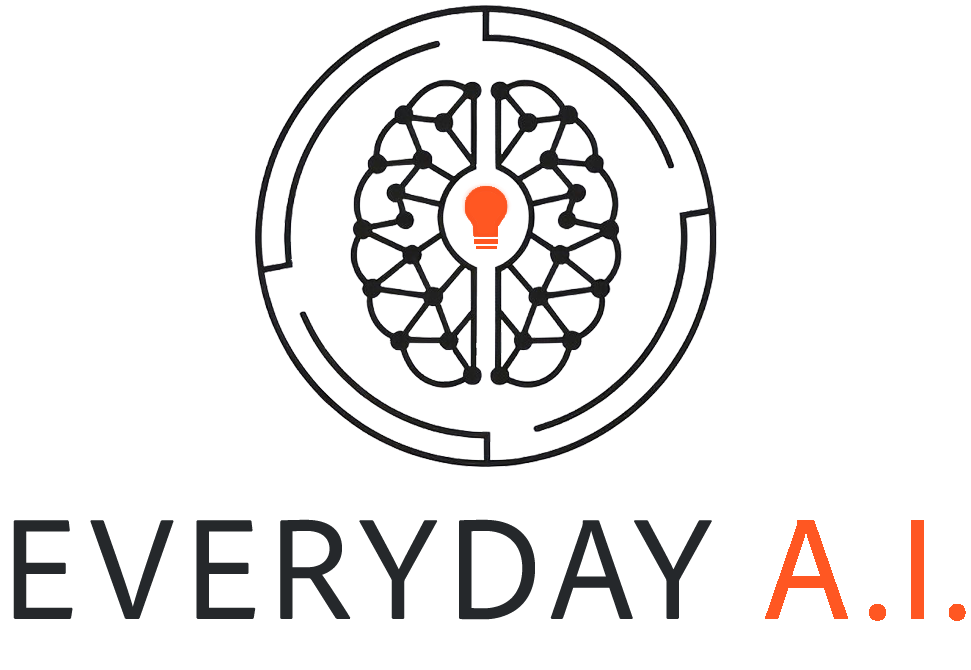The AI education crisis: how enterprises are losing billions to the skills gap

The artificial intelligence revolution has created one of the largest skills gaps in modern business history. While 78% of organizations have deployed AI in at least one business function according to McKinsey's 2024 Global Survey, only 35% of workers have received any AI training in the past year, reveals new data from Randstad. This disconnect between rapid AI adoption and workforce preparedness is creating unprecedented challenges—and opportunities—for businesses worldwide.
The trillion-dollar disconnect between AI investment and workforce readiness
The numbers paint a stark picture of misaligned priorities. Boston Consulting Group's October 2024 study of over 1,000 executives found that 74% of companies struggle to achieve and scale value from their AI investments, with only 26% developing the necessary capabilities to move beyond proof-of-concept stages. Meanwhile, the World Economic Forum projects that 40% of workers will need reskilling within the next three years due to AI implementation, yet LinkedIn's 2024 Workplace Learning Report shows that only 38% of U.S. executives are actively helping workers become AI-literate.
The economic implications are staggering. McKinsey estimates AI could deliver $4.4 trillion in added productivity growth, but only 19% of executives report revenue increases exceeding 5% from their current AI initiatives. This gap represents not just missed opportunities but active value destruction—Harvard Business Review reports AI project failure rates as high as 80%, almost double the rate of corporate IT project failures from a decade ago.
The skills shortage manifests differently across demographics. Randstad's 2024 report exposes a 42 percentage point gender gap in AI skills, with 71% of AI-skilled workers being men. Age discrimination is equally troubling: only 22% of Baby Boomers receive AI training opportunities compared to 45% of Gen Z workers. These disparities aren't just equity issues—they're business risks that limit organizational AI capability.
When 90% of your employees are using shadow AI without permission
Perhaps the most revealing statistic comes from MIT's Project NANDA 2025 study: while only 40% of companies have purchased official AI tool subscriptions, a remarkable 90% have employees regularly using personal AI tools for work tasks. This shadow AI epidemic represents one of the largest gaps between official technology adoption and grassroots usage in recent corporate history.
The scale of unauthorized AI use is breathtaking. Cyberhaven Labs' analysis of 3 million workers found that 73.8% of workplace ChatGPT accounts are non-corporate, with usage of other tools even higher—94.4% for Google's Gemini and 95.9% for Bard through personal accounts. More concerning, 27.4% of corporate data put into these AI tools is classified as sensitive, up from 10.7% the previous year. The National Cybersecurity Alliance reports that 38% of employees share sensitive work information with AI tools without employer permission, and Software AG found that 46% would refuse to give up their personal AI tools even if banned by their organization.
This bottom-up revolution is delivering better results than many formal initiatives. MIT's research shows that while 95% of formal GenAI investments report zero impact on profit and loss statements, employees using their own AI tools are achieving measurable productivity gains. The message is clear: workers aren't waiting for corporate training programs—they're teaching themselves, often at significant risk to data security and governance.
The overwhelming confusion of choosing from 18,000 AI tools
The AI tool landscape has become a maze of confusion for both enterprises and employees. BCG's research reveals that successful AI leaders actually pursue 50% fewer opportunities than their less advanced peers, focusing on 3.5 use cases versus 6.1, and achieving 2.1 times greater ROI through this focused approach. Yet most organizations haven't learned this lesson.
Forrester's 2024 research found that over 90% of enterprise AI decision-makers have concrete plans to adopt generative AI, but 60% of workers will use their own AI tools anyway, bypassing organizational guidance due to selection confusion. The proliferation problem is quantified by Capterra's 2024 Tech Trends Survey, which found that 58% of U.S. software buyers regret at least one purchase made in the past 12-18 months, with IT businesses experiencing the highest purchase regret at 76%.
The usability crisis compounds selection challenges. Nielsen Norman Group's 2024 research identifies AI as representing the third user-interface paradigm in 60 years, creating fundamental interaction confusion. Their research suggests that half the population in rich countries may not be articulate enough to get good results from current AI interfaces without proper training. When UXPA surveyed professionals in 2024, only 47% found AI tools had "some value" for their work, while 20% were "not impressed" with AI tools' capabilities.
Training budgets shrink while demand for AI education explodes 1,060%
The disconnect between training supply and demand has never been more extreme. Coursera reports a 1,060% year-over-year increase in global GenAI course enrollments from 2023 to 2024, with enrollment rates jumping from 1 per minute to 12 per minute in 2025. LinkedIn Learning saw a 142-fold increase in members adding AI skills like Copilot and ChatGPT to their profiles, while edX experienced a 424% increase in executive education AI program enrollments.
Despite this explosive demand, corporate response remains inadequate. Microsoft and LinkedIn's 2024 Work Trend Index found that while 66% of leaders wouldn't hire someone without AI skills, only 25% of companies expect to offer AI training this year. Training Magazine reports that U.S. training expenditures actually decreased 3.7% to $98 billion in 2024, with average training hours per employee dropping from 57 to 47 hours annually.
The mismatch is creating a two-tier workforce. Brandon Hall Group's 2024 study found that 73% of employees identify AI skills as crucial for their roles, but only 25% have received relevant training. Meanwhile, 50% of Gen Z workers might quit if not offered AI training according to Skillsoft, creating a retention crisis alongside the skills gap. The global corporate training market is projected to grow from $133.13 billion in 2024 to $229.12 billion by 2030, but this growth may be too slow to close the widening skills chasm.
How bottom-up adoption is beating top-down strategy 2:1
The traditional model of technology adoption has been turned on its head by AI. KPMG's 2024 survey found that 50% of U.S. workers use AI tools at work without knowing if it's allowed, while 44% knowingly use AI improperly. Contrary to conventional bottom-up adoption patterns, the research shows leaders utilizing GenAI more than entry-level employees—53% of executives regularly use GenAI at work versus 44% of midlevel managers.
The departmental divide is equally striking. KPMG found that IT and Technology departments have 66% full integration of GenAI programs, while Marketing and Sales lag at 48%. Stanford HAI's 2024 AI Index confirms this fragmentation, showing that while 71% of organizations use GenAI in at least one business function, coordination across departments remains minimal. Software AG's research quantifies the bottom-up revolution: employee-driven adoption outpaces top-down initiatives by a factor of 2:1, with 90% grassroots usage versus 40% formal adoption.
This organic adoption pattern is reshaping corporate hierarchies. Microsoft's data shows that 77% of leaders say early-career talent will get greater responsibilities with AI, fundamentally altering traditional career progression. The top 5% of Microsoft Teams users saved 8 hours per month—equivalent to a full workday—by using AI to summarize meetings, demonstrating how individual initiative can drive dramatic productivity gains without formal programs.
The hidden 74% of AI value waiting to be discovered
Organizations are sitting on a goldmine of untapped AI potential. BCG's 10-20-70 rule reveals that success requires only 10% focus on algorithms, 20% on technology and data, but 70% on people and processes—yet most companies invert this ratio. O'Reilly's 2024 survey of 2,800 technology professionals found that 53% cite "identifying appropriate use cases" as their biggest adoption barrier, suggesting that the majority of AI's potential remains unexplored.
The statistics on undiscovered value are sobering. BCG estimates that 74-80% of potential AI value remains unrealized, with most companies stuck at proof-of-concept stages. MIT's findings are even more stark: 95% of formal GenAI investments show zero impact on profit and loss statements, while 60-65% of possible AI applications remain undiscovered or underexplored. Only 18% of organizations have AI applications in production according to O'Reilly, with 34% still at proof-of-concept stage.
The cost of this discovery gap compounds over time. Stanford's 2024 data shows that only 9% of organizations are AI-mature, while 45% of leaders in high-maturity organizations keep AI projects operational for three or more years. The message is clear: most companies are barely scratching the surface of AI's potential, missing transformative opportunities while focusing on superficial applications.
Interface confusion costs 76% of developers their confidence
The user experience crisis in AI tools is creating a hidden productivity drain. Stack Overflow's 2024 Developer Survey found that while 76% of developers use or plan to use AI tools, the same percentage report significant interface challenges. TechTarget's Enterprise Strategy Group discovered that 70% of AI implementation challenges stem from people and process issues rather than technical problems, with only 20% attributed to technology and 10% to algorithms.
Nielsen Norman Group's research provides the psychological explanation: AI represents the first fundamental shift in user interface paradigms in over 60 years, moving from command-based to intent-based interaction. This shift has created what they term "deep-rooted usability problems" requiring specialized prompt engineers—a role that shouldn't need to exist if interfaces were intuitive. Their analysis suggests that approximately 50% of the population in developed countries lacks the articulation skills needed to effectively use current AI interfaces.
The confusion manifests in measurable business impact. Everest Group found that 73% of CIOs cite lack of clarity on success metrics as their top challenge, while 64% struggle with the fast-evolving technology landscape. Only 8% of organizations consider their generative AI initiatives mature despite 90% increasing usage, according to TechTarget. This interface confusion doesn't just slow adoption—it actively destroys value through misuse and abandoned initiatives.
Germany's 20% adoption rate reveals Europe's AI education emergency
The German-speaking market provides a sobering benchmark for AI adoption challenges. Bitkom's 2024 comprehensive study found that only 20% of German companies currently use AI, up from just 15% in 2023 and 3% in 2018. While 73% view AI as the most important future technology, 48% offer no AI training to their employees, and only 21% provide training to most or all staff members.
The skills crisis is particularly acute in the DACH region (Germany, Austria, Switzerland). PwC Germany's 2024 financial services study found that only 9% of DACH financial executives believe their company is well-prepared for AI, while 64% lack employees with necessary AI expertise. The Swiss market shows even more conservative adoption, with Accenture reporting that only 2% of Swiss businesses are expanding generative AI enterprise-wide, and merely 7% of executives feel confident in their data strategy for AI.
Government initiatives are attempting to bridge the gap. Germany's Federal Ministry of Education and Research has launched AI Campus, a free digital learning platform, and created 30 additional Alexander von Humboldt AI Professorships by 2024. Switzerland projects a potential economic impact of CHF 127 billion by 2030 from AI adoption, but current education infrastructure remains inadequate. The regional data reveals a critical truth: even in highly developed economies, the AI education gap threatens to undermine competitive advantage.
The 13.8% productivity miracle that proper AI training delivers
When organizations invest in proper AI education, the results are transformative. A landmark 2024 NBER study by Brynjolfsson, Li, and Raymond found that customer support agents using AI tools with proper training saw a 13.8% increase in productivity, measured by issues resolved per hour. More dramatically, novice and low-skilled workers experienced 35% productivity improvements, while new employees saw 34% gains—effectively eliminating the experience gap between junior and senior staff.
Microsoft's Work Trend Index 2024 provides even more compelling evidence: 75% of knowledge workers now use AI at work, with 90% reporting time savings. The top 5% of Microsoft Teams users saved eight hours monthly through AI-powered meeting summaries. IBM's data shows companies with AI-based tools and training report over 10% increases in annual revenue compared to those without, with IBM itself achieving $3.5 billion in productivity gains through AI and automation.
The sector-specific gains are equally impressive. Bain & Company's 2024 research found financial services firms achieving average 20% productivity gains from AI in software development and customer service, with some early adopters reaching performance improvements of up to 20% of earnings after 18-36 months. In healthcare, Oliver Wyman estimates AI could save doctors three hours daily, allowing them to serve 500 million additional patients globally per year. GitHub's data shows their Copilot tool makes developers 55% more productive, while ChatGPT has been shown to improve general worker productivity by 37%.
The exploding $550 billion demand for AI education programs
The AI education market is experiencing unprecedented growth. Reuters research projects AI spending will exceed $550 billion in 2024, with an expected AI talent gap of 50%. The World Economic Forum anticipates 97 million new AI jobs by 2025, while the U.S. Bureau of Labor Statistics projects 21% growth in AI careers from 2021 to 2031. This explosive demand is reshaping the entire education sector.
Platform-specific growth tells the story. LinkedIn reports they're making 250+ AI courses free, responding to data showing that 4 in 5 professionals want to learn more about AI in their profession. India leads global adoption with 1.3 million GenAI enrollments on Coursera alone in 2024. Professional certificate enrollments are growing 69% year-on-year, while searches for "AI" on edX increased 114% year-over-year, making it a top-five search term.
Yet the corporate response remains insufficient. EY's 2024 AI Pulse Survey found that while 75% of senior leaders investing in AI experience positive ROI, only 37% are training employees on AI "fully and at scale." Josh Bersin Company research reveals that only 4-5% of large-scale upskilling programs advance to the measurement stage, suggesting most training investments fail to deliver measurable outcomes. The global e-learning market, valued at $227.34 billion in 2023, is expected to reach $740.46 billion by 2032, but this growth may still lag behind the exponential increase in AI skills demand.
Conclusion
The data reveals an unprecedented crisis in workforce preparedness for the AI age. With enterprise AI adoption at 78% but employee training at only 35%, shadow AI usage affecting 90% of companies, and 74% of organizations failing to achieve value from AI investments, the need for comprehensive AI education has never been more urgent. The statistics show that organizations providing proper AI training see productivity gains of 13.8-55%, while those without training face 80% project failure rates. As we head into 2025, the choice is clear: invest in AI education now, or risk being left behind in the greatest technological transformation of our time.
Sources: McKinsey Global Survey 2024, Boston Consulting Group 2024, Randstad 2024, MIT Project NANDA 2025, Nielsen Norman Group 2024, Coursera 2024, Microsoft Work Trend Index 2024, PwC Germany 2024



